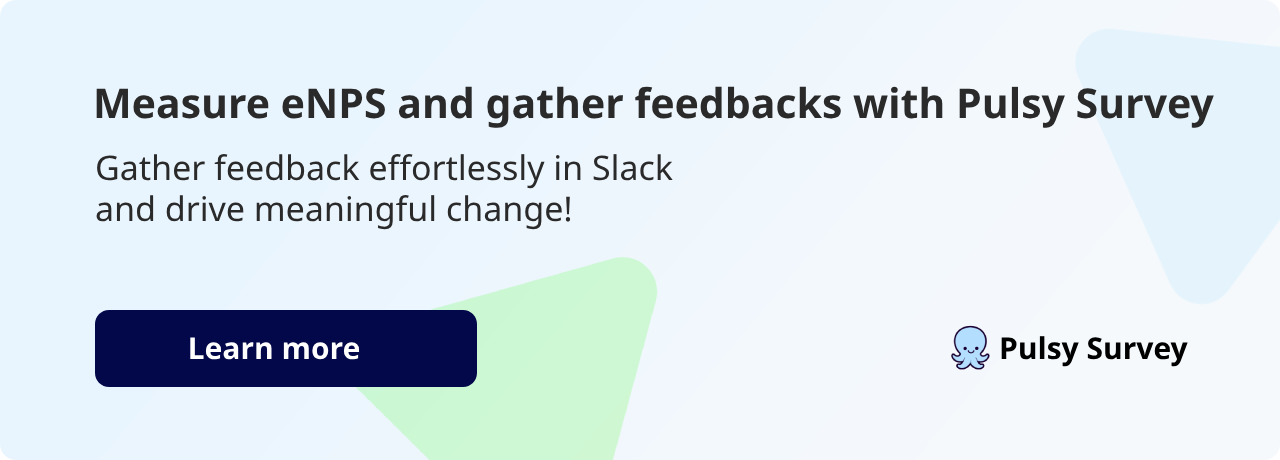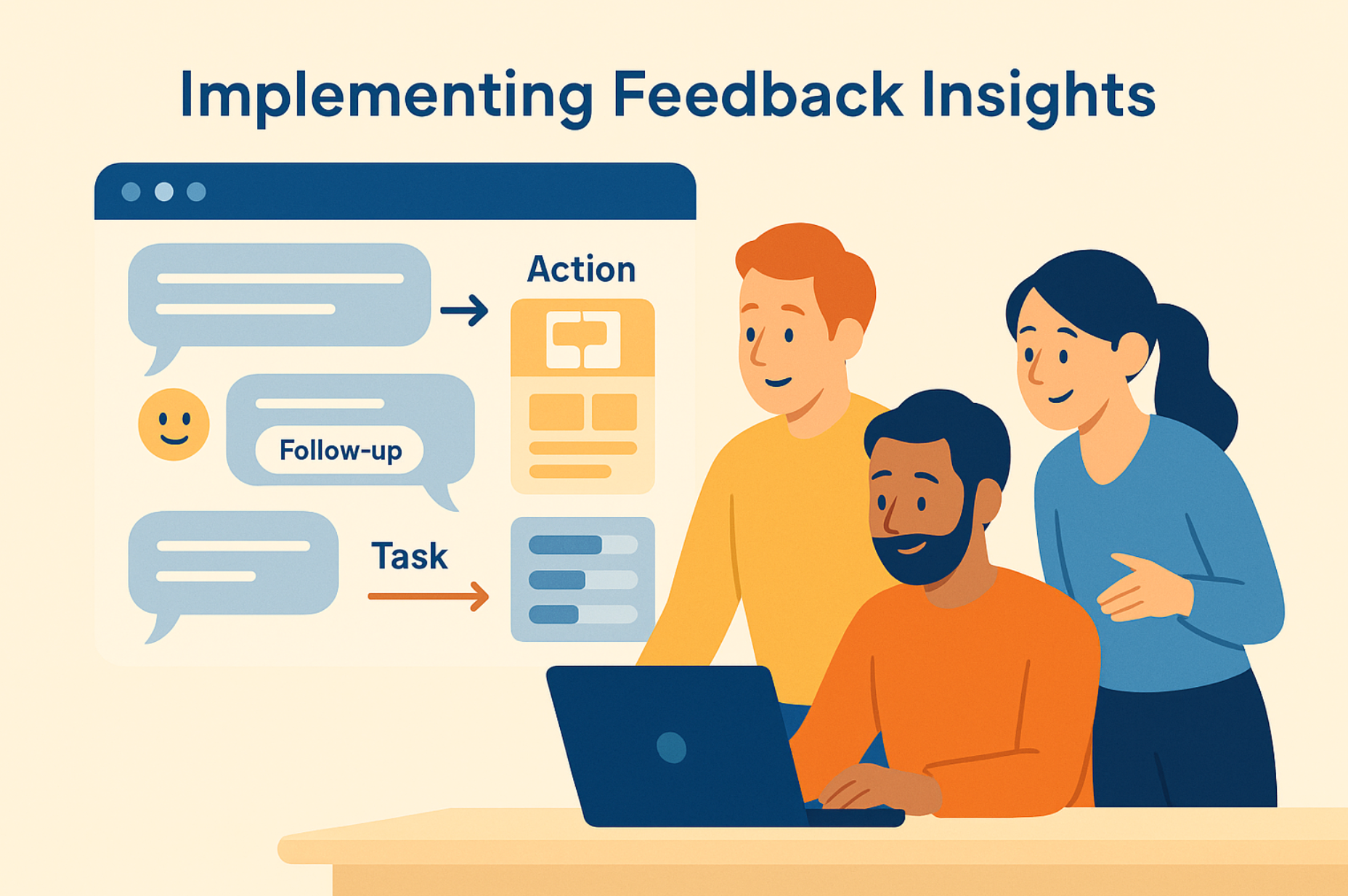Ultimate Guide to Feedback Analysis in Slack
Feedback analysis in Slack helps HR teams capture insights, track sentiment, and improve engagement using channels, surveys, and AI-powered tools inside Slack.


Feedback analysis in Slack transforms employee communication into actionable insights. By leveraging dedicated feedback channels and AI tools like Aware and Olvy, organizations can assess sentiment, prioritize concerns, and implement meaningful changes. Here's what you'll learn:
- Why Feedback Analysis Matters: Real-time insights improve employee engagement and decision-making.
- Setting Up Channels: Organize feedback with clear naming conventions and permissions.
- Analyzing Feedback: Use tools for sentiment analysis, tagging, and trend tracking.
- Turning Feedback Into Action: Integrate Slack with tools like Trello or Jira to track and implement changes.
- Keeping Employees Informed: Share updates to build trust and encourage ongoing participation.
Slack isn't just a messaging tool - it’s a platform to improve workplace culture through continuous feedback. Start by creating structured channels, analyze input with AI tools, and act on insights to drive engagement and satisfaction.
Make sense of your employee feedback data with just one click
Setting Up Feedback Channels in Slack

Creating Feedback Channels
Managing feedback in Slack starts with setting up dedicated channels that are easy to navigate and clearly named. Use descriptive labels like #user-feedback, #bug-reports, and #feature-requests to ensure everyone knows where to share specific types of input.
Here’s a simple way to structure your channels:
| Channel Type | Purpose and Access Level |
|---|---|
| Public Feedback | Open to all team members for general suggestions |
| Private Feedback | Restricted to selected members for sensitive topics |
| Bug Reports | Focused on technical issues, visible to dev teams and managers |
| Feature Requests | For new ideas, accessible to product teams and stakeholders |
Admins and Workspace Owners can fine-tune permissions in Slack's 'Administration' settings, deciding who can view or contribute to each channel.
Encouraging Employee Participation
Getting employees involved requires a mix of thoughtful planning and practical tools. Here are a few ideas:
- Enable Anonymous Submissions: Use tools that integrate with Slack to allow anonymous feedback, especially for sensitive topics. This encourages honesty while keeping the context intact.
- Set Clear Guidelines: Pin a post in each channel outlining how to submit feedback, expected response times, and examples of helpful input.
- Make It Interactive: Use Slack features like emoji reactions, threads, and @mentions to keep the feedback collection process engaging and organized.
"Using best practices to give and receive feedback - and acting on it - is both an inclusive experience for your colleagues as they see their suggestions incorporated into final versions." - Slack Team
You can also use third-party tools like Pulsy by BuddiesHR to streamline valuable feedback collection through surveys and analytics, adding more structure and depth to your Slack channels.
Once your channels are live and employees are actively contributing, the next step is to dive into the feedback and turn it into actionable insights.
Analyzing Feedback in Slack
Using Slack Integrations for Analysis
Once you've set up dedicated Slack channels, the next step is to make sense of the feedback collected. This is where powerful tools come in handy. They help dig into conversations and uncover useful insights. For instance, sentiment analysis can reveal the emotional tone behind employee input. Tools like Aware use AI to evaluate message sentiment and flag potentially toxic communication [1].
| Tool | Function | Features |
|---|---|---|
| Aware | Sentiment Analysis | Message scoring, toxicity detection, trend tracking |
| Olvy | Feedback Management | AI tagging, keyword extraction, auto-categorization |
| Pulsy | Survey Analysis | Response aggregation, trend identification, anonymous insights |
Once you've gathered the data, the real challenge is organizing and prioritizing it to ensure important insights don't slip through the cracks.
Organizing and Prioritizing Feedback
To make feedback actionable, it's essential to focus on areas that align with company goals and improve employee satisfaction. Metrics like sentiment scores, recurring themes, and potential impact are key to this process.
AI tools such as Olvy's AI Copilot simplify this by automatically tagging and categorizing feedback into themes [2]. This approach highlights patterns and makes it easier to identify patterns and what matters most.
When prioritizing feedback, consider these factors:
- How often similar feedback appears
- The potential effect on employee morale and satisfaction
- Resources needed to address the issue
- Whether it fits with the organization's goals
Feedback from multiple sources that points to the same issue often signals a deeper concern that requires immediate attention. Once feedback is sorted, the next step is implementing changes based on these insights.
Struggling with remote employee engagement?
Empower your employees with our suite of apps designed for Slack, enhancing engagement and communication. Choose only the tools you need for a thriving team environment.
Implementing Feedback Insights

Tracking Actions with Integrations
Turning employee feedback into action requires more than just collecting insights - it demands a clear system to ensure follow-through. Slack-integrated project management tools make it easier to transform feedback into tasks, preventing valuable input from being ignored.
With these tools, team members can use simple slash commands to create tasks directly from feedback shared in Slack channels. This quick response keeps the momentum going and shows employees that their input matters.
| Integration Type | Key Features | Best Use Case |
|---|---|---|
| Trello + Slack | Create cards from messages, automate updates | Visualizing and organizing feedback |
| Jira + Slack | Create issues, receive status updates | Managing technical projects and fixes |
| Asana + Slack | Assign tasks, track progress updates | Coordinating across multiple teams |
Build workflows that make it easy to move from feedback collection to actionable tasks. Transparent processes like these encourage accountability and ensure feedback doesn't fall through the cracks. And while tracking actions is essential, keeping employees informed about the changes made is just as important.
Informing Employees of Changes
Keeping employees in the loop about changes based on their feedback is key to building trust and encouraging ongoing participation. When people see their suggestions lead to real improvements, they’re more likely to stay engaged.
Set up a dedicated Slack channel or similar space to share updates about changes made from employee feedback. This shows leadership’s commitment to listening and highlights the impact of employee contributions.
Tools like Pulsy can help track and communicate progress effectively. When sharing updates, connect the changes directly to the feedback that inspired them. Be sure to include:
- How the change addresses the original concern
- The timeline for implementing the solution
- The expected impact on the team or workplace
For feedback that can’t be acted on immediately, explain the reasons or share alternative approaches. This kind of transparency helps maintain trust and sets realistic expectations for future improvements.
Managing Slack Feedback Channels
Promoting an Open Feedback Culture
Encouraging employees to share honest feedback requires thoughtful planning and consistent interaction. Start by setting clear guidelines for channel usage that promote constructive and professional discussions.
Using tools designed for feedback collection can make the process smoother. For instance, BuddiesHR's Pulsy app integrates with Slack to create structured surveys and feedback loops, allowing employees to share their thoughts in a familiar workspace.
Here are a few ways to organize and improve feedback collection in Slack:
- Organized Channel Structure: Create channels based on departments, projects, or specific themes. This keeps feedback focused and easy to address, with regular review schedules ensuring timely responses.
- Anonymous Feedback Options: Tools like Aware offer sentiment analysis [1], making it easier to gather honest input, especially on sensitive matters.
- Regular Feedback Cycles: Schedule periodic feedback reviews to maintain engagement and act promptly on shared insights.
Once these systems are in place, it's important to periodically review and adjust them to keep the feedback process effective.
Reviewing and Updating Feedback Processes
Olvy's Slack Integration can help teams analyze feedback patterns and engagement levels [2], offering valuable insights for refining processes.
| Aspect to Review | Key Metrics | Action Items |
|---|---|---|
| Channel Activity | Message volume, response rates | Restructure channels if engagement drops |
| Response Time | Average time to acknowledge input | Set up automated acknowledgment messages |
| Implementation Rate | Percentage of feedback addressed | Develop a system to track follow-up actions |
Focus on these areas to ensure your feedback channels remain effective:
- Monitor engagement levels to confirm feedback is actionable.
- Measure how often feedback leads to meaningful changes.
- Assess employee satisfaction with the overall feedback process.
Regularly tracking and refining these aspects ensures your Slack feedback channels continue to serve their purpose effectively.
Conclusion: Using Feedback Analysis to Improve the Workplace
Key Points
Analyzing feedback effectively in Slack can lead to workplace improvements that matter. According to Harvard Business Review, 92% of executives see better performance from engaged employees, with a 56% return on investment from engagement initiatives.
Three main factors drive the success of feedback analysis:
| Component | Impact | Key Metric |
|---|---|---|
| Frequent Feedback | Ongoing insights | 41% lower absenteeism |
| Quick Action | Builds trust | 17% higher productivity |
| Trackable Results | Shows progress | 21% increased profitability |
"People don't get survey fatigue; they get lack of action fatigue." - Didier Elzinga, CEO of Culture Amp
By focusing on these elements, HR teams and leaders can turn Slack feedback into real, actionable improvements.
Next Steps for HR and Leaders
Pulsy, a tool from BuddiesHR, makes it easier to run structured surveys and gather feedback directly in Slack.
To get the most out of feedback, keep the process ongoing - collect feedback, respond, and act on it. The Betterworks 2022 State of Performance Enablement report highlights that one-third of employees experience minimal check-ins with their managers, showing room for progress.
When deciding where to focus, prioritize actions that will have the biggest impact. As Bill Catlette, founder of Contented Cow Partners, explains:
"The real work involves the subsequent feedback and action phases, where the results are shared extensively with the surveyed workgroups and action plans are developed and implemented."
With nearly 80% of Fortune 100 companies using Slack as their communication hub, it’s the perfect platform to build a strong feedback culture. Regular feedback, clear analysis, and timely actions can create a more engaged and productive workplace.

Frequently Asked Questions
1. What is feedback analysis in Slack?
Feedback analysis in Slack is the process of collecting and interpreting employee input from Slack messages and channels to uncover trends, measure sentiment, and improve team performance. It helps organizations transform everyday conversations into actionable insights.
2. What tools help with feedback analysis in Slack?
Some of the best tools for feedback analysis in Slack include:
- Pulsy by BuddiesHR - for surveys and structured feedback collection
- Aware - for sentiment analysis in Slack messages
- Olvy - for feedback prioritization and AI tagging
These tools act as advanced feedback trackers and integrate deeply with Slack analytics.
3. Why is Slack a good platform for employee feedback?
Slack works well for employee feedback because it supports real-time communication across channels, making it easy to provide feedback in context. This accessibility helps improve both team efficiency and transparency across departments.
4. How do you encourage employees to share feedback in Slack?
You can increase participation by:
- Allowing anonymous submissions through integrated tools
- Setting clear channel guidelines
- Acknowledging and responding to feedback consistently
- Showing employees how their feedback leads to real action
This builds trust and drives continuous participation.
5. How do you turn Slack feedback into action?
To turn Slack feedback into action:
- Tag and categorize feedback using AI tools
- Prioritize based on frequency, impact, and business alignment
- Create tasks using integrations like Jira, Trello, or Asana
- Track progress and update employees regularly
6. Can employee feedback in Slack be tracked and measured?
Yes, employee feedback in Slack can be tracked and measured using analytics and survey tools like Pulsy, which help monitor sentiment trends, feedback volume, participation rates, and implementation rates to evaluate engagement and the success of your feedback initiatives.




